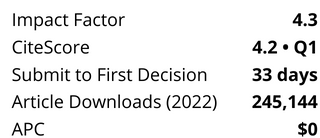The aim of this work was to study the removal of three pesticides using conventional drinking water treatment (DWT) processes. These methods are the most used in Brazil, and include coagulation–flocculation of water. The pesticides/metabolites evaluated were: endosulfan, ethylenethiourea (ETU), and 1,2,4-triazole. The laboratory tests were carried out in triplicate using the jar test. Synthetic water samples prepared with kaolin, simulating the dry and rainy periods, were contaminated with different concentrations of pesticides. Results showed that conventional DWT methods are not suitable for the removal of the pesticides/metabolites evaluated. No significant difference (p < 0.05) was observed for the dry and rainy seasons. However, the removal was observed to decrease with higher initial concentrations of the contaminants. With regard to the removal of contaminants, ETU and 1,2,4-triazole resulted in the lowest removal percentages (ETU: median ≤11% in decanted water and 1,2,4-triazole ≤18% in decanted water) compared to endosulfan (median ≤54% in decanted water). This fact can be justified by the low solubility of endosulfan in water at 20 °C and high Koc, log Kow and molar mass, in relation to the other two pesticides.
Skip Nav Destination
Article navigation
September 2013
This article was originally published in
Journal of Water Supply: Research and Technology-Aqua
Article Contents
Research Article|
September 01 2013
Efficiency of conventional drinking water treatment process in the removal of endosulfan, ethylenethiourea, and 1,2,4-triazole
A. F. Saraiva Soares;
1Department of Sanitary and Environmental Engineering, Universidade Federal de Minas Gerais (UFMG), Av. Antônio Carlos, 6627 CEP 31270901, Belo Horizonte – MG, Brazil
E-mail: asaraiva.soares@gmail.com
Search for other works by this author on:
M. M. D. Leão;
M. M. D. Leão
1Department of Sanitary and Environmental Engineering, Universidade Federal de Minas Gerais (UFMG), Av. Antônio Carlos, 6627 CEP 31270901, Belo Horizonte – MG, Brazil
Search for other works by this author on:
M. R. Vianna Neto;
M. R. Vianna Neto
1Department of Sanitary and Environmental Engineering, Universidade Federal de Minas Gerais (UFMG), Av. Antônio Carlos, 6627 CEP 31270901, Belo Horizonte – MG, Brazil
Search for other works by this author on:
E. P. da Costa;
E. P. da Costa
1Department of Sanitary and Environmental Engineering, Universidade Federal de Minas Gerais (UFMG), Av. Antônio Carlos, 6627 CEP 31270901, Belo Horizonte – MG, Brazil
Search for other works by this author on:
M. C. de Oliveira;
M. C. de Oliveira
1Department of Sanitary and Environmental Engineering, Universidade Federal de Minas Gerais (UFMG), Av. Antônio Carlos, 6627 CEP 31270901, Belo Horizonte – MG, Brazil
Search for other works by this author on:
N. B. Amaral
N. B. Amaral
1Department of Sanitary and Environmental Engineering, Universidade Federal de Minas Gerais (UFMG), Av. Antônio Carlos, 6627 CEP 31270901, Belo Horizonte – MG, Brazil
Search for other works by this author on:
Journal of Water Supply: Research and Technology-Aqua (2013) 62 (6): 367–376.
Article history
Received:
February 26 2013
Accepted:
June 07 2013
Citation
A. F. Saraiva Soares, M. M. D. Leão, M. R. Vianna Neto, E. P. da Costa, M. C. de Oliveira, N. B. Amaral; Efficiency of conventional drinking water treatment process in the removal of endosulfan, ethylenethiourea, and 1,2,4-triazole. Journal of Water Supply: Research and Technology-Aqua 1 September 2013; 62 (6): 367–376. doi: https://doi.org/10.2166/aqua.2013.042
Download citation file:
Sign in
Don't already have an account? Register
Client Account
You could not be signed in. Please check your email address / username and password and try again.
Could not validate captcha. Please try again.




%20cropped.png?versionId=5947)